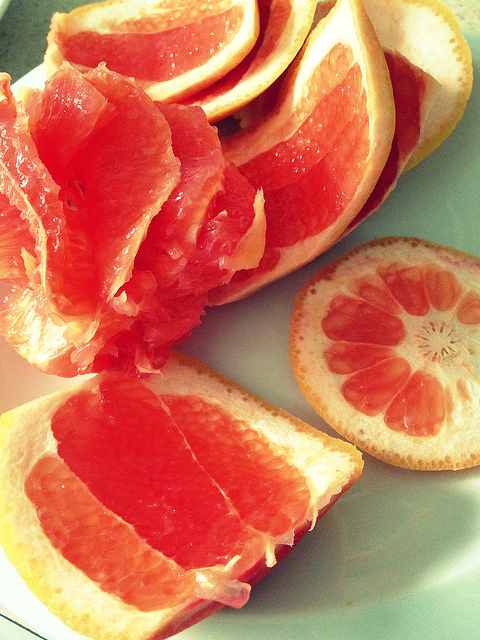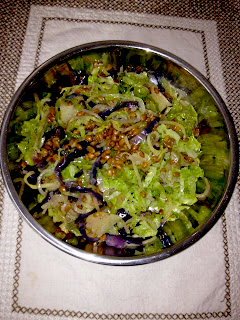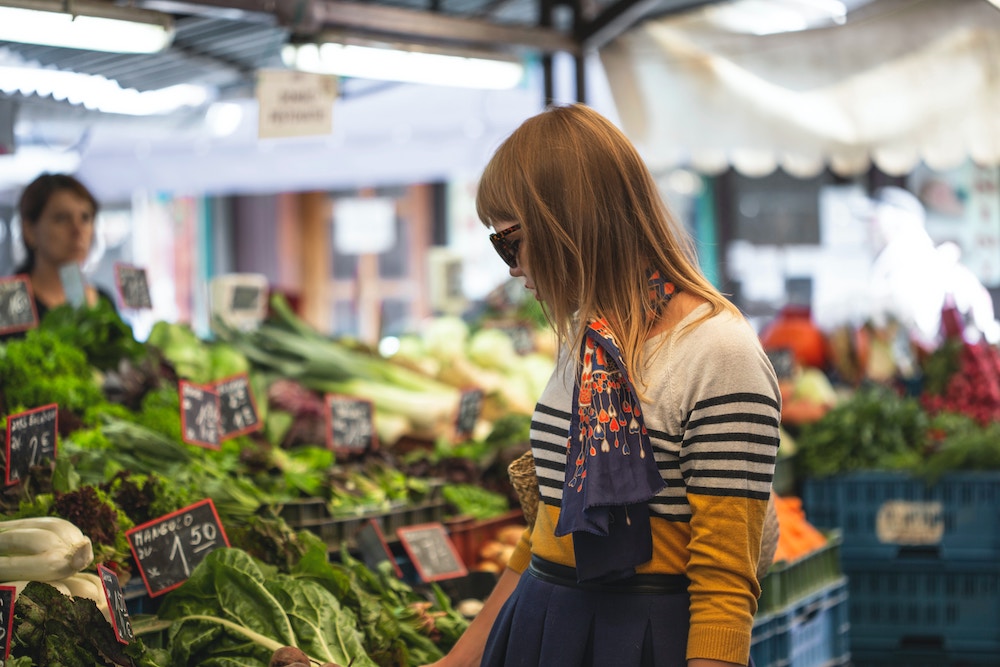Before I discovered the alkaline diet, I had researched and followed different vegan nutritional programs. My first program that helped me transition into becoming a vegan eater was Dr. McDougall’s starched-based fat-free program. I also experimented with the Gerson salt-free and juicing protocol, D. Ornish’s low-fat, complex carbohydrate menus, J. Fuhrman’s “Eat to live” water content fruits and vegetables. Each time, I felt very excited to learn, compare and incorporate new approaches into my diet and lifestyle. I was always in search for more interesting knowledge on healthy living.
Five years ago, while browsing the vegan section at Borders, I found Robert Young’s book “pH Miracle” which changed not only my diet but my entire understanding of how the body works, what diseases are, what alkalinity means, explained by he calls “the new biology of health.” Through Dr. Young’s pH Miracle books, his seminar at Organic Avenue in NYC, and videos on youtube as well as my observations and personal experience, have convinced me that alkaline diet and lifestyle is the best alternative for me.
According to Dr. Young, our health depends on maintaining a state of acid-alkaline balance. Our bodies work to maintain the proper blood pH of 7.365 by neutralizing and eliminating acids (bacteria, yeast and fungus toxins) from every day functioning. When we overly acidified we develop sicknesses. We age by fermenting, rotting and molding inside from piled-up “garbage” that is accumulated from external and internal stresses, animal and other wrong food/drinks. Although no one can avoid old age, we can help balance our body by peaceful living, by choosing alkaline water and food, and by doing exercises that strengthen the “channels of elimination.”
When we are conventionally advised what food is good for us, the explanation normally comes from what nutrients it has and not from how it behaves and affects the body, or how much acidic waste it leaves in the body. Green vegetables (highly alkaline food) are good for the body as they are digested almost completely, while highly acidic animal products are stressful for the body because it needs to produce more alkalizing chemicals to neutralize the food, using alkaline minerals (calcium, magnesium, potassium and sodium) from the bones and tissues to buffer acids to maintain the proper pH of blood.
The first step in starting the alkaline diet was sorting out my vegan food based on the degree of their alkalinity and acidity. Due to the high content of sugar which is strongly acidic I had to stop eating sweet fruits (oranges, ripe bananas, pears, mangos, etc.). The only alkaline fruits remained in my diet: limes, lemons, and grapefruits. I found that whole grains (brown rice, wheat, oats, and rye) are not only acidic, but also come to the stores already stale from being stored in silos for a long time. According to Dr. Young, the only alkaline grain is non-stored spelt, and seeds that look like grains (buckwheat, millet, quinoa and amaranth). All beans except lima beans and lentils were actually acidic, and I also had to give up corn and peanuts (technically beans), which allegedly contain carcinogenic fungi, yeast and molds. Highly acidic, yeast-containing and fermented food (vinegar, apple cider vinegar, miso, soy sauce, pickles, condiments, etc.) were also eliminated from my diet. Most nuts except for almonds are acidic, and all mushrooms are fungi themselves so they also had to go. Sugar, artificial sweeteners, and chocolate made from cocoa butter also build up toxins.
Separate struggles for me were the use of fats and what to drink. Being on a fat-free diet for several years, I had to radically change my attitude to using oil after I knew that oils (olive, coconut, flax seed) are alkaline and needed to buffer acids in the body. Drinking a lot of right water was another thing for me to learn. Tap water’s pH is neutral (7.0) but not safe, and all bottled purified water is acidic, so alkaline water should have pH above 7.0 and best if it is 9.5 and higher. Details on alkaline water can be found in many sources online and in Dr. Young’s books.
A non-vegan would probably wonder what is there left to eat after removing so much food but vegans will realize that a lot of food are still available: all vegetables, organic tofu (highly alkaline), buckwheat, quinoa, spelt, sprouted grains/legumes, almonds, almond butter and almond milk, real sea salt, limes/lemons, grapefruits, olive/hemp/flaxseed/coconut oil and some nut and seed butter (tahini).
After eliminating acidic food and switching to alkaline water I was on my way to the alkaline diet. I made green juices/smoothies in the morning; I had lightly steamed vegetables for lunch (cooked and especially overcooked vegetables are actually acidic); I made salads of avocado, cucumber, tomato and other raw vegetables for dinner. I found that I didn’t like the taste of olive oil so I used hemp and flaxseed oil, and cold processed coconut oil and tahini (sesame seeds paste) became my favorites.
Within a month of alkaline eating I dropped eleven pounds from my normal weight of 135 lb. I immediately started to have headaches and runny nose. For a month my nose would not stop dripping, and only neti pot irrigation with saline water could relieve my runny nose for some time. I already knew that a headache and other “cold symptoms” are the primary ways of the body’s detoxification and tolerated them with understanding. In fact all manifestations of cold symptoms, fever, headaches and other sicknesses should be welcome because it means that the body is in the process of cleansing; you may have experienced that after being “sick” you feel more energy as some acids have been removed from the system.
I’ve been following Dr. Young’s pH protocol closely for about two years. Then I became more flexible aiming for 80% alkaline and 20% acidic in my diet, but never lower than 60:40, which I only allow when I’m traveling. I learned to detox my body through juice fasting, and several days of blended and pureed food and green smoothies on schedule when I am free and can afford to get “sick”. If I have some celebration I can allow myself to eat “bad” food (but never animals) and then I get back to my alkaline diet. I haven’t found a better vegan eating option for myself yet and I feel so lucky that I had a chance to know about it.
Alkaline diet or acid-alkaline or pH diet is becoming more known and popular. It might not be the best option for everyone, but personally, I feel healthy and happy on this plan. It is not easy to accept that we make ourselves sick from compromised immune system, that a personal health is a responsibility of an individual and not a doctor; and for many it’s even hard to understand how not to eat meat and how not to rely on drugs when feeling sick; but as vegans, alkavarians, raw foodists, we can lead by example and give tools to health conscious people to improve their lives.
Larisa’s Alkaline Recipes
Cabbage noodles
Green and purple (optional) cabbage leaves
Tomato sauce
Cooked spelt berries
Carefully remove top layers of cabbage leaves, roll them and cut in long stripes. Steam them for a few minutes until desired softness and crunchiness and serve on a plate. Heat some tomato sauce of your choice and pour on steamed cabbage noodles. Optionally you can sprinkle pumpkin and sunflower seeds or cooked spelt berries. The meal is ready. Instead of tomato sauce you can also use almond mayo.
Almond mayo
1 cup of blanched almonds
1 cup of cooked amaranth (for stickiness)
1 cup of almond milk
2 Tbsp of ground flax seeds
1 Tbsp of coconut oil
1 Tbsp of olive oil
1 tsp of sea salt
1 Lemon juice
Spices of your choice
Place all listed ingredients in Vita-Mix and blend with a plunger to make smooth paste.
Salty cookies/biscuits
2 cups of selected flour or a mixture of them. There is a big choice of flour (spelt, buckwheat, millet, quinoa, amaranth, almond meal, and coconut powder) Spelt flakes or other kinds of flakes are also good in place of flour or in addition to flour.
2-3 Tbsp of ground flax seeds (instead of eggs)
1 tsp of sea salt
¼ tsp non-aluminum baking soda (Bob’s Red Mill’s brand)
1 cup of water or almond/soy milk milk
1-2 Tbsp of lemon or grapefruit juice
Optional: ½ cup of sesame seed or sunflower seeds (make sure that baking soda is thoroughly dissolved in lemon or grapefruit juice otherwise sunflower seeds can turn green inside the cookies)
Start with having baking soda dissolved with lemon/grapefruit juice in a large bowl, then add ground flax seeds, sea salt, mix them well, then add flour and water or unsweetened almond/soy milk. Mix all the ingredients well so that batter is thick enough to be spooned on a tray. I use parchment paper to cover a tray. Bread will form round like jumbo cookies that’s why I call them cookies. Bake for 15-20 min at 350 degrees.
Also in Diet: My “Beauty Detox” Journey
Fall DIY 3 Day Food Cleanse Program
By Larisa: Learning Yoga in India
___
Photo: Heather Quintal via Flickr; Larisa Tazmin






